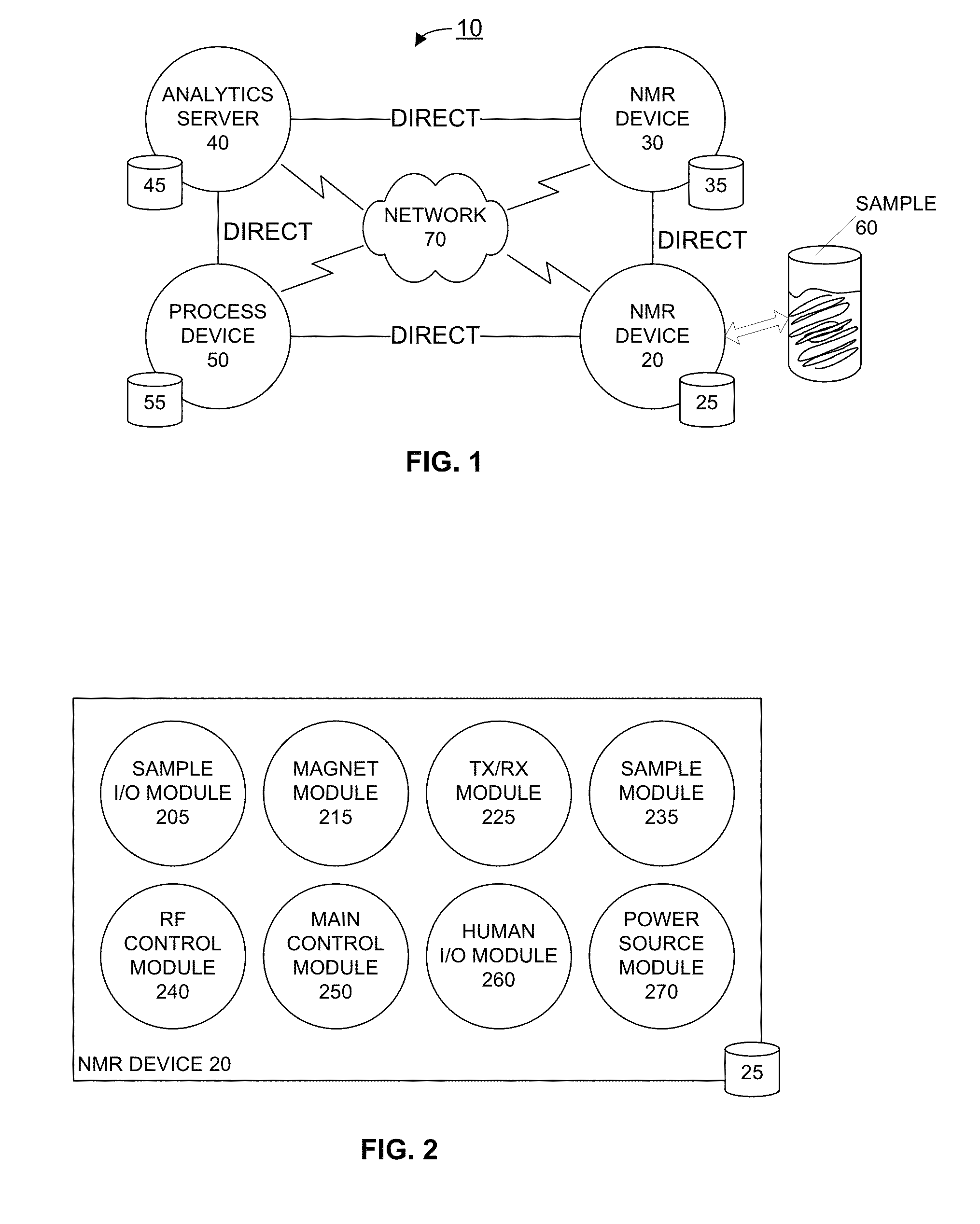High precision elemental composition determination
a composition determination and high-precision technology, applied in the field of nuclear magnetic resonance, can solve the problems of low precision, low cost, and limited accuracy of multi-point calibration curves, and achieve the effects of minimizing sample handling and preparation, low cost, and simple procedures
- Summary
- Abstract
- Description
- Claims
- Application Information
AI Technical Summary
Benefits of technology
Problems solved by technology
Method used
Image
Examples
Embodiment Construction
[0021]Certain embodiments disclosed herein provide for high precision elemental concentration determination using a nuclear magnetic resonance device. For example, one embodiment disclosed herein allows for a mining operation to continuously monitor samples of a source fluid in the field and in the refinery plant while the source fluid is refined into a desired product fluid. After reading this description it will become apparent to one skilled in the art how to implement the invention in various alternative embodiments and alternative applications. However, although various embodiments of the present invention will be described herein, it is understood that these embodiments are presented by way of example only, and not limitation. As such, this detailed description of various alternative embodiments should not be construed to limit the scope or breadth of the present invention as set forth in the appended claims.
[0022]FIG. 1 is a network diagram illustrating an example system 10 f...
PUM
| Property | Measurement | Unit |
|---|---|---|
| static magnetic field | aaaaa | aaaaa |
| concentration | aaaaa | aaaaa |
| magnetic field | aaaaa | aaaaa |
Abstract
Description
Claims
Application Information
 Login to View More
Login to View More - R&D
- Intellectual Property
- Life Sciences
- Materials
- Tech Scout
- Unparalleled Data Quality
- Higher Quality Content
- 60% Fewer Hallucinations
Browse by: Latest US Patents, China's latest patents, Technical Efficacy Thesaurus, Application Domain, Technology Topic, Popular Technical Reports.
© 2025 PatSnap. All rights reserved.Legal|Privacy policy|Modern Slavery Act Transparency Statement|Sitemap|About US| Contact US: help@patsnap.com



